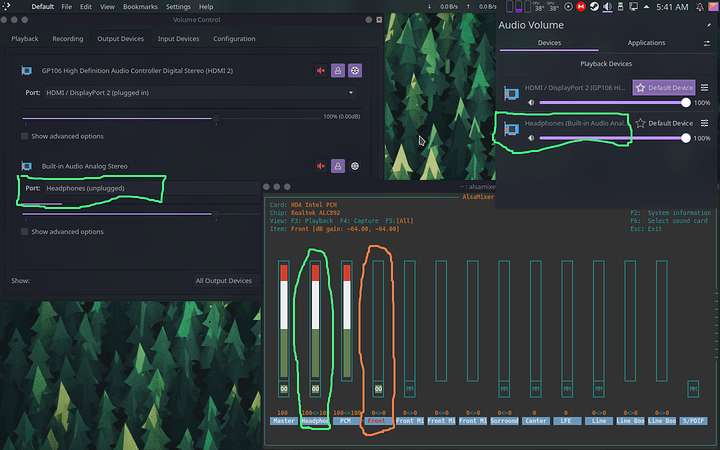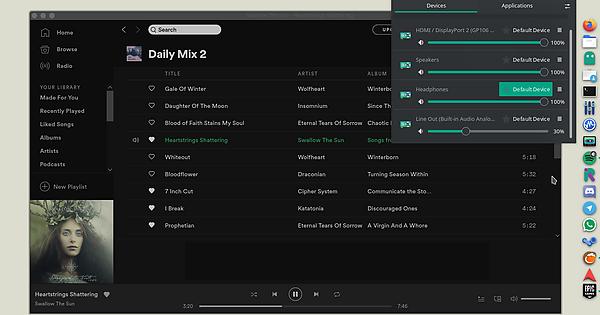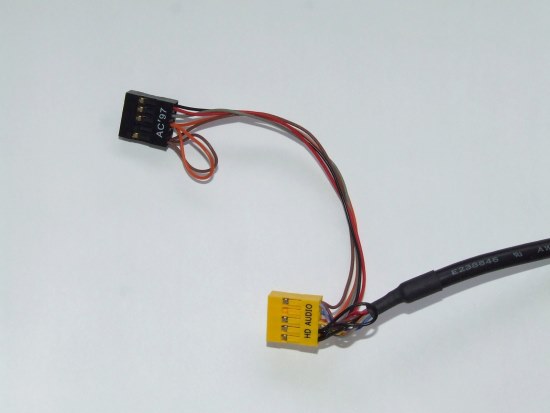i have this exact post posted on destination linux’s forum - https://discourse.destinationlinux.network/t/how-to-change-audio-source-in-linux-kde-plasma/1829/15
while switching from speakers to headphones in pavucontrol-qt as i was getting audio from both speakers and headphones at the same time by doing that so i took a look and noticed something (i deleted the sinks i created before in /etc//pulse/default.pa)
when im using default line out output (on the left in pavucontrol-qt) im getting audio from speakers marked with orange the front in alsamixer controls the volume of rear jack which is called line out in both pavucontrol-qt and kde volume manager which the alsa mixer has a line control if u look at alsamixer 4th from the right (the headphones volume in alsa is at max right now but i dont get any sound)
but when i change to headphones (on the left in pavucontrol-qt) im getting audio in headphones (marked green) and speakers (marked orange) same time but if i lower the volume of front in alsamixer (marked orange) i get audio in only headphones which is the front panel audio jack
if u can join me there we can talk there its hard to talk same thing over 2 different forums




